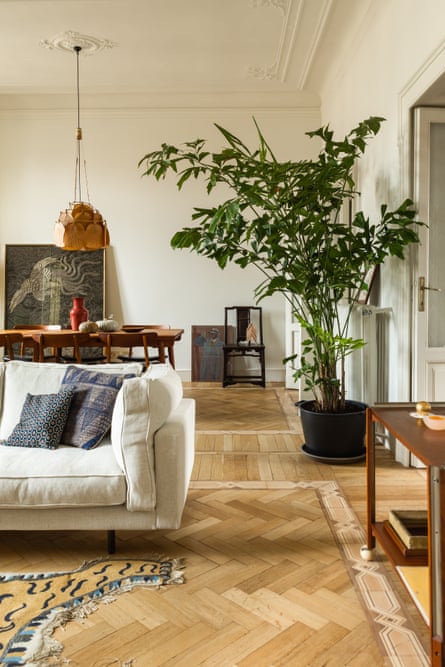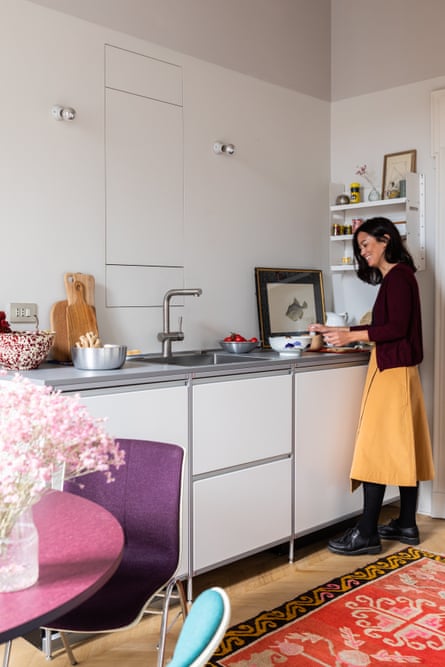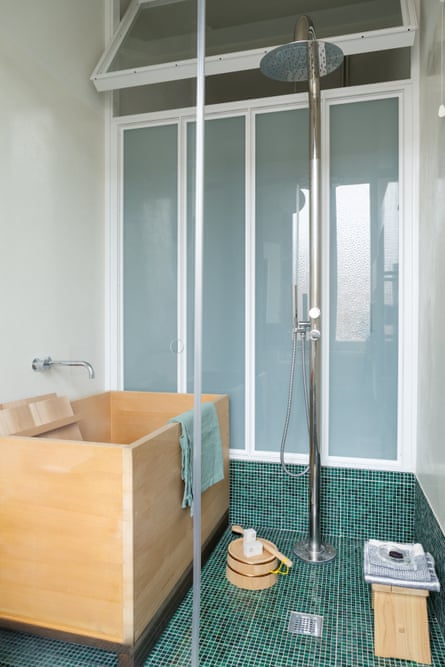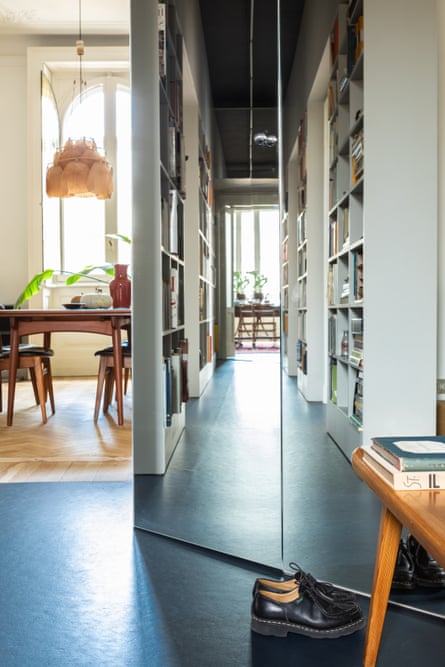
Milan is a city full of secret oases. Its busy, noisy streets are lined with neoclassical façades and blocks of Brutalist condominiums, but behind the imposing doorways are spaces famed for their contrasting tranquillity. Verdant internal courtyards are lined with bicycles and buggies lit by the warm glow from the huge windows of the apartments that overlook them. On Via Luigi Settembrini lies an extra-special secret escape.
The third-floor apartment of Francesca Pellicciari and Giacomo Donati, founders of the Japanese curated concept store Nanban, unites their passion for contemporary Japanese objects with their pastime of collecting iconic Italian design. They moved here in 2017. As long-term residents of the city, they chose the area, between Lazzaretto and the Central Station, because it was central, but as yet ungentrified, unlike Isola in the northwest: “I really don’t like places that are too perfect,” says Pellicciari. Now in their 40s, they also felt that the burgeoning NoLo area was “too young for us”.
“Back then, this area was a bit more affordable, but still with a really good quality of construction in the buildings,” she says of the 1920s building. “It still has the tram lines. Sometimes you feel that you’re living in the 1920s, you have this idea of how it was.”
The couple enlisted their friends, the architect group Baukuh, to help them open up the apartment’s floorplan. When it was first built it was divided into small rooms. A century later, with open-plan living on trend, the pair removed walls and completely remapped the place to create a tale of two halves.

On one side lies the living and dining space, defined by its original wood parquet flooring, tall ceilings and 1920s stained-glass windows. This area is filled with large Chinese antiques and inherited artworks that stand alongside a teak midcentury dining set by the Danish designer Hans Wegner, a bamboo pendant light by Ingo Maurer and artwork by Le Corbusier that Pellicciari bought when she was 16.
Their office is on the other side of two symmetrical saloon-style doors. In the corner, a chair by the Japanese designer Sori Yanagi nestles among artwork by friends including Perugian artist Sauro Cardinali and London-based Rose Blake. “It’s important to us to have mixed things,” says Pellicciari. “We don’t have a lot of art pieces, but we like to mainly have works from people we know.”

A chair that sits in the living space by the Finnish architect Alvar Aalto was a steal they snapped up at a Vitra sample sale and carried home on the train. Vintage lamps dotted around the place were found on German eBay – “It’s much harder to find something interesting in Italy,” says Donati. On the other side of the apartment, the kitchen table is a Danetti prototype bought at a factory sale. “Every year they get rid of things,” he says. “One year we bought a square version of the table and a year later, we found the same one, but it was circular and purple. So now we switch between the two.”
The rest of their home reflects this same outside-the-box thinking. In the hallway that divides the two sides of the apartment, floor-to-ceiling bookshelves are met with mirrored walls angled to increase the light and add to the illusion of continuity and space.

“We don’t really like to see ourselves in the mirror,” laughs Pellicciari. “But this angle which is not straight allows you not to see yourself, but to see what is reflected on the opposite side of the apartment.” It was, admits Donati, “a bit of a leap of faith, but the corridor is on the dark side of the house and when the sun rises – especially in the summer – it brings in a lot of light.”
Elsewhere, the traditional wooden Japanese bathroom that the pair had installed is a place of calm, completing their peaceful haven.
“To use the Japanese bath, you enter clean, so it’s more like a ritual for us to enjoy for longer as the water stays warmer for longer – it’s completely different from the use of a classic western bath,” says Donati. “It’s one of those incredible things in Japan where you find a totally hectic society and then all of a sudden someone enters one of these places where they can find a tranquil space.”



